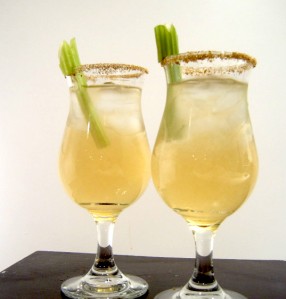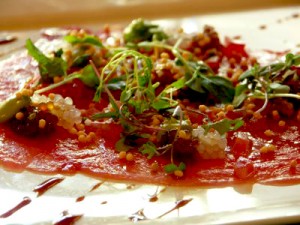 I loved this recipe! This is so refreshing and flavorful and worth the few minutes it takes to prepare and serve. It’s taken from: Company’s Coming: Practical Gourmet – Small Plates for Sharing (pages 58 & 59).
I loved this recipe! This is so refreshing and flavorful and worth the few minutes it takes to prepare and serve. It’s taken from: Company’s Coming: Practical Gourmet – Small Plates for Sharing (pages 58 & 59).
(Note: the image shown is an example of carpaccio but not that of the recipe below.)
Seared beef carpaccio with peppercorn mushrooms:
– 1 tbsp / 15 ml Montreal steak spice
– 1 tbsp / 15 ml finely chopped fresh thyme
– 1 lb / 454 g beef strip loin steak
– 1 tbsp / 15 ml cooking oil
– 5 cups / 1.25 L sliced brown mushrooms
– 1/3 cup / 75 ml brandy
– 1 tbsp / 15 ml canned green peppercorns
– 1 tbsp / 15 ml butter
– ½ cup / 125 ml Arugula leaves lightly packed
Combine Montreal steak spice and finely chopped thyme (I used dried and would have preferred fresh) in a pie pan or wide bottom bowl. Press steak into spice mixture until coated. Cook on a greased grill on high for about 2 minutes per side until browned and slightly crisp. Transfer to cutting board. Cover with foil and let stand for 10 minutes.
Heat cooking oil in a frying pan on medium-high. Add mushrooms and cook until browned and liquid is evaporated.
Stir in brandy and peppercorns. Add butter and stir until melted.
Cut steak across the grain into very thin slices. Arrange with arugula and mushrooms on a serving plate. Serves 6.
Company’s Coming describes an alternative method for cooking the Beef Carpaccio. (I grilled it on our flat top at the Deli). Instead of grilling the steak you can sear it using olive oil in a very hot stainless steel or cast iron frying pan. Sear each side for only one minute. The result will be a very thin dark crust that is quite appealing; however, it is not recommended that you use this method with a non-stick pan as the high heat may ruin the non-stick coating.
A couple of my own notes:
- I doubled the recipe because it was for a group of 15 people as an appetizer. If you have a smaller dinner group the recipe portion is perfect!
- I used spinach instead of arugula. Although spinach was good the arugula would have added more of a peppery taste to further compliment the flavors.
- When I sautéed the mushrooms, peppercorns, brandy & butter, I poured it over the spinach, which was down the centre of the platter with the beef carpaccio on both sides.
- Squeezing a bit of fresh lemon juice down each side of the plated carpaccio enhances the flavor (personal preference).
- Once the beef carpaccio has been left to stand for 10 minutes, you can put it in the freezer for 15 minutes to make it a bit firmer, which makes it easier for thinly slicing.
 We used the meat slicer at the Deli and did so after the beef stood for 20 minutes.
We used the meat slicer at the Deli and did so after the beef stood for 20 minutes.
(If you’re interested in the book, you’ll find Company’s Coming: Practical Gourmet – Small Plates for Sharing at Chapters – Indigo.)


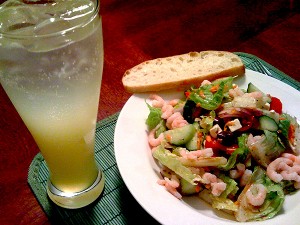
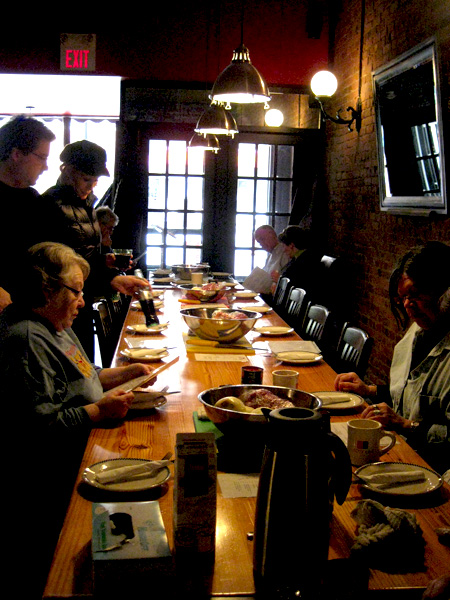
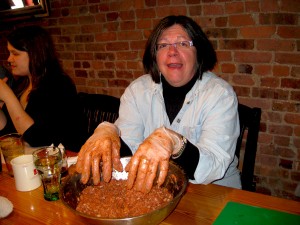

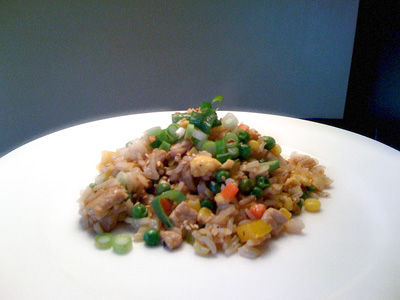
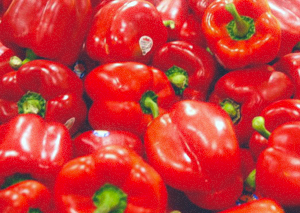
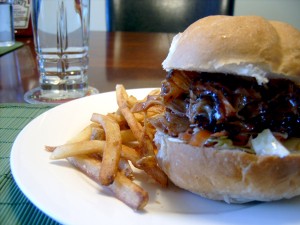
 Sometimes it is called Boston Butt, or pork shoulder. It should look
Sometimes it is called Boston Butt, or pork shoulder. It should look 